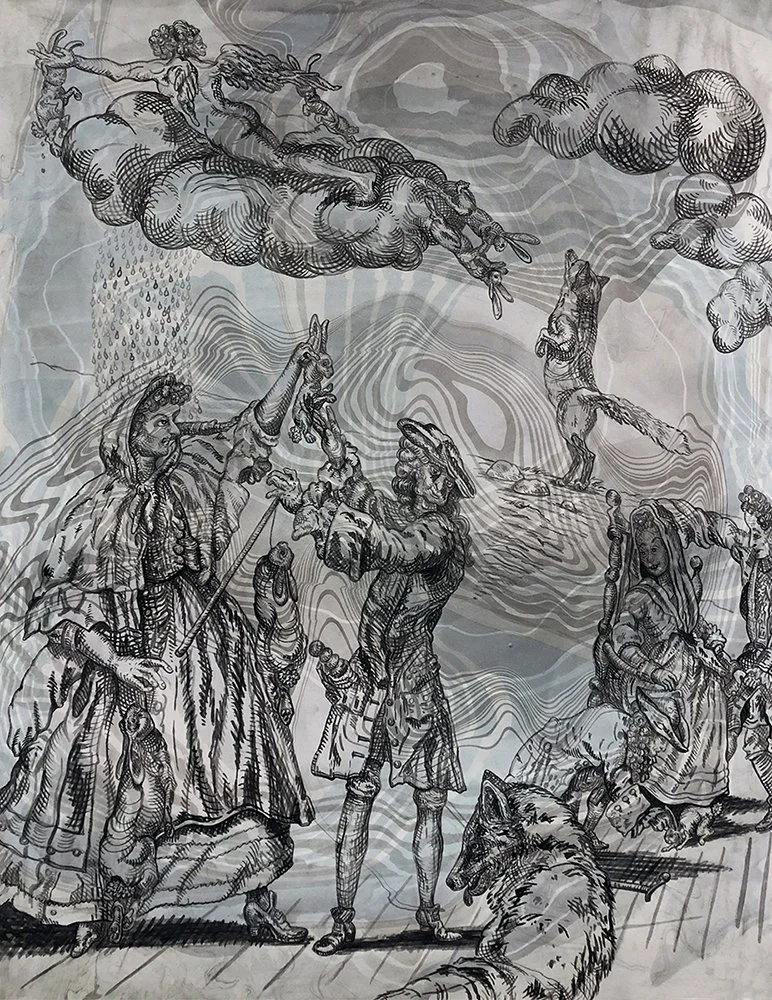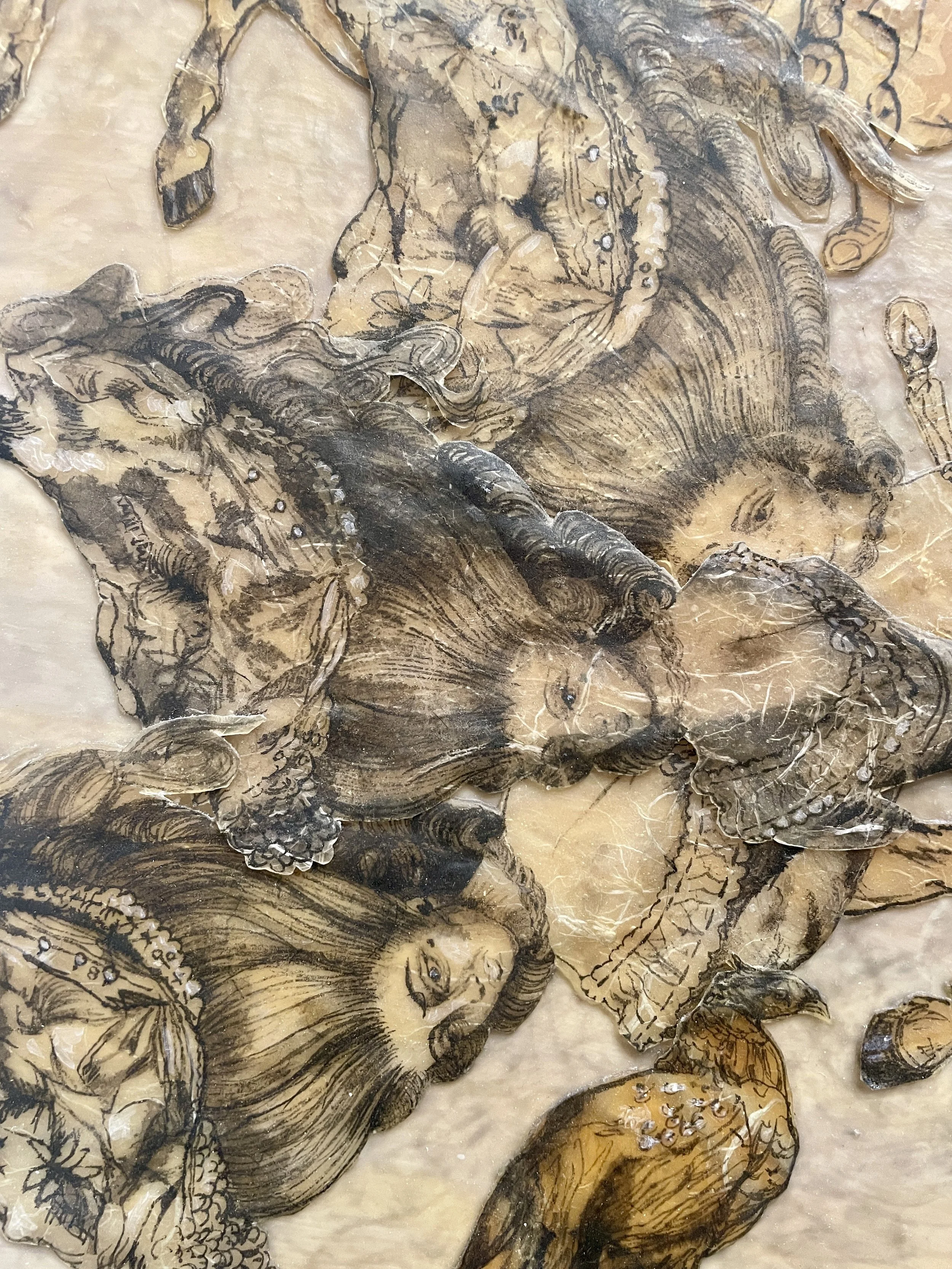Interview: Amelia Biewald
Amelia Biewald recreates intrigues, telling stories about the confluence of myth, history, science and scandal. She received a BFA with honors from the Rhode Island School of Design and Goldsmith’s College, University of London, and then pursued sculptural work at the Minneapolis College of Art and Design where she received her MFA. She attended the Skowhegan School of Painting and Sculpture in 2004 and has received many artist awards, residencies, and fellowships for her work including a Skowhegan Fellowship, a Bush Foundation Fellowship, and a Jerome Foundation Fellowship. She was awarded space by the Lower Manhattan Cultural Council and has spent time at Art Garda Residency in Sirmione, Italy. She is a currant recipient of a Puffin Foundation Grant for her artwork, and is working on an exhibition through the Symposia! Program for the Michael David & Co. Gallery at Art Cake in Brooklyn, NY.
Amelia Biewald works actively as a professional artist, educator and curator. Amelia is a member of Rosalux Gallery in Minneapolis, MN, WAAM in Woodstock, NY and the Equity Gallery in NYC. She is the founder of Army Of Frogs Studio in High Falls, NY where she resides and curates for the gallery.
Read our interview with Amelia below!
Autour de la Fin du Monde, Multi-media installation with central “disco ball” sculpture (144 x 144 inches), hand made wallpaper, and video projection with lighting elements
PP: Walk us through a typical day in your studio or generally through your process to make new work.
AB: I usually think of a preliminary theme or idea for a piece when I am not in the studio. I make sure to put it in my “Notes” on my phone. Much of my work is based on history and art history, so I then research the topic or related topics via books and historical copies of texts using the internet. For the actual MAKING part of the work, I start with sketches and jot down ideas of what could work. I think of longevity and where the piece might be shown. If I know it is going to be shown in a certain place, I find a floor plan and figure out the lighting and what is available to me. This is very important when I do larger installations. Then I work from the sketches and notes on materials to start the process. This process then evolves as I make decisions about the work in progress and make edits- sometimes these edits greatly change the format of the work and sometimes it comes together more easily and follows the ideas I visualized in the sketches. Large pieces and installations usually become severely altered from my original plan, but a lot of my paintings and 2D works follow my original thought process.
Mother’s Darling, Mixed media sculpture and watercolor painting combo, ceramic sculpture 5 x 4 x 5 inches, painting 10 x 8 inches
The Argument, Ink and watercolor on hand-marbled rag paper, 30 x 22 inches
PP: What motivates you to make art?
AB: I have a pretty vivid and crazy imagination and feel the need to create works that capture that and make me feel energized and excited about the final look of the piece. I often combine ideas and odd combinations of objects and materials that push my skill set as a maker, while at the same time make me laugh. I find the humorous aspect of stories and situations that I try to re-create in my own way push me to resolve the works in progress. There is a certain way my brain tells me something should look, and I work on the piece until it approaches that vision. Deadlines are also a major motivation, as well as critiques and work by other artists that I feel is successful.
PP: What is one goal you are aiming to achieve this year for your art practice?
AB: I am working on two large works that I want to be shown together as a sort of installation. A main goal for me is to be able to find an exhibition space that will allow me to use a lot of space, and be able to control the lighting and things like that. I also want the gallery, art center or museum to help me with some installation costs and physical assistance with the art installation itself.
You Make Me Feel Like I’m Seventeen Again, ink and watercolor on Japanese paper on panel with acrylic, 34 x 32 inches.
15 Bad Habits, Cast rubber, electrical elements, resin clay, chandelier crystals, antique bronze mirrors, 78 x 72 x 12 inches
PP: What are ways you support other artists?
AB: I also work as a curator and am always on the lookout for new and innovative works by artists. I like to show work I respect and that I think is good. I try to go to as many openings of peers work that I can and also collect.
PP: Favorite hobby outside of art?
AB: I am sort of obsessed with gardening and think of my yard as a sort of painting. I plan color combinations and sizes of the plants and how they relate to the ones next to them as if I was planning a painting.
To learn more about Amelia’s work, see her Instagram and Website





